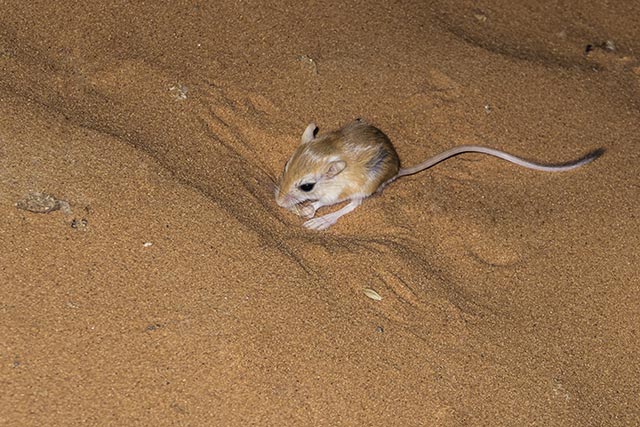
“Everybody loves kung fu fighting” goes the popular song. The chart-topping song was even more well-known thanks to Bruce Lee, who popularized the ancient martial art at the box office. The song ushered in a generation who grew up wishing they had at least half the moves that the world-famous kung fu master had in his lifetime.
While not all human beings are built for such physical feats, rodents of the Dipodomys genus come with powerful hind legs to perform incredible kicks – and for good reason. Recent studies led by the University of California (UC), Riverside and University of California, San Diego have shown that desert kangaroo rats (Dipodomys deserti) use similar moves to foil snakes. The papers, which appeared in Functional Ecology and the Biological Journal of the Linnean Society, explained how the seemingly defenseless rodents could escape a host of predators, including rattlesnakes, through a combination of quick reaction times, powerful leaps, and mid-air kicks.
“We found that kangaroo rats escaping from snake strikes relied on rapid response times to initiate effective evasions,” the researchers wrote in their report. “During jumps, their enlarged hind limbs propelled vertical leaps that were multiple body lengths into the air, and these leaps were often accompanied by mid-air kicks and other [maneuvers] that deterred snakes.”
Those kicks "were fast as lightning"
For the study, the researchers documented how desert kangaroo rats interacted with sidewinder rattlesnakes (Crotalus cerastes) in the wild. To track the hunting behavior of the rattlesnakes, they used radio telemetry, which uses invisible and silent signals to determine an animal's location.
The researchers then set up high-speed cameras to record the snakes as they hunt areas where the desert kangaroo rats are present. The resulting videos – which they uploaded on their site NinjaRat.org – offer a glimpse of how the rats use complex maneuvers to evade (or defend against) a deadly predator.
Here's a video of a desert kangaroo rat launching a drop-kick in midair to escape the jaws of a rattlesnake.
“These lightning-fast and powerful maneuvers, especially when executed in nature, tell us about the effective strategies for escaping high-performing predators,” explained Timothy Higham, co-author for both UC studies. “Those that are successful at evading the strike will suggest ways in which the kangaroo rat might be evolving in response to the intricacies of the predatory movements.”
All this happened in speeds faster than the blink of an eye. The average blink takes around 400 milliseconds, which is more than enough for a sidewinder to lunge at you, given it can launch a strike in less than 100 milliseconds. What surprised the researchers, however, is that the desert kangaroo rat is even faster: Data from their study revealed that the rats could initiate jumps within 38 milliseconds of a snake starting to strike. This meant that kangaroo rats could easily jump to get away from the snake, according to UC San Diego's Rulon Clark, another co-author of the study. To avoid an attack, a kangaroo rat can jump as high as up to eight body lengths into the air – leaving the snake in the dust.
The team also looked at how a kangaroo rat behaves once it is caught by a rattlesnake. If the rat isn't quick enough and gets caught by the snake, it often avoids the venomous bite by reorienting itself in mid-air and kicking the snake away – like a ninja.
The finding also explains why kangaroo rats seem to emerge from a successful snakebite relatively unscathed. Earlier studies tested blood from kangaroo rats to determine if they carry proteins that make them resistant to snake venom, similar to squirrels and opossums. The videos also show how the rodents not only rely on their powerful legs to escape a strike but also use their long tails to reorient themselves and allow themselves to defend against an attack. (Related: Baby rabbit calls out to be saved from deadly snake.)
The two studies highlight how predator-prey relationships are complex and can greatly vary, even when conducted in experimental contexts; how desert kangaroo rats have successfully adapted to the role by developing a mechanism that allows them to evade predators like snakes and owls.
Who would have thought that cute kangaroo rats could be, in fact, “a little bit frightening.”
Sources include:
Please contact us for more information.





















